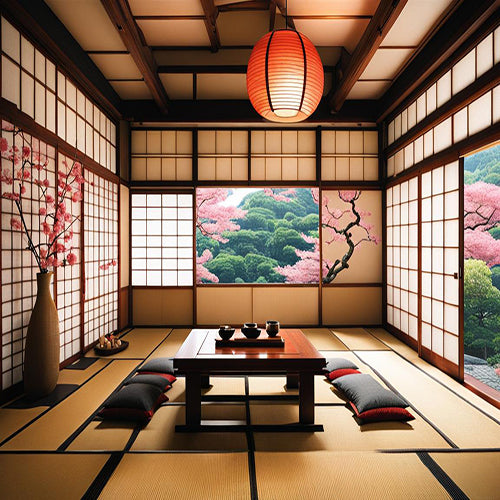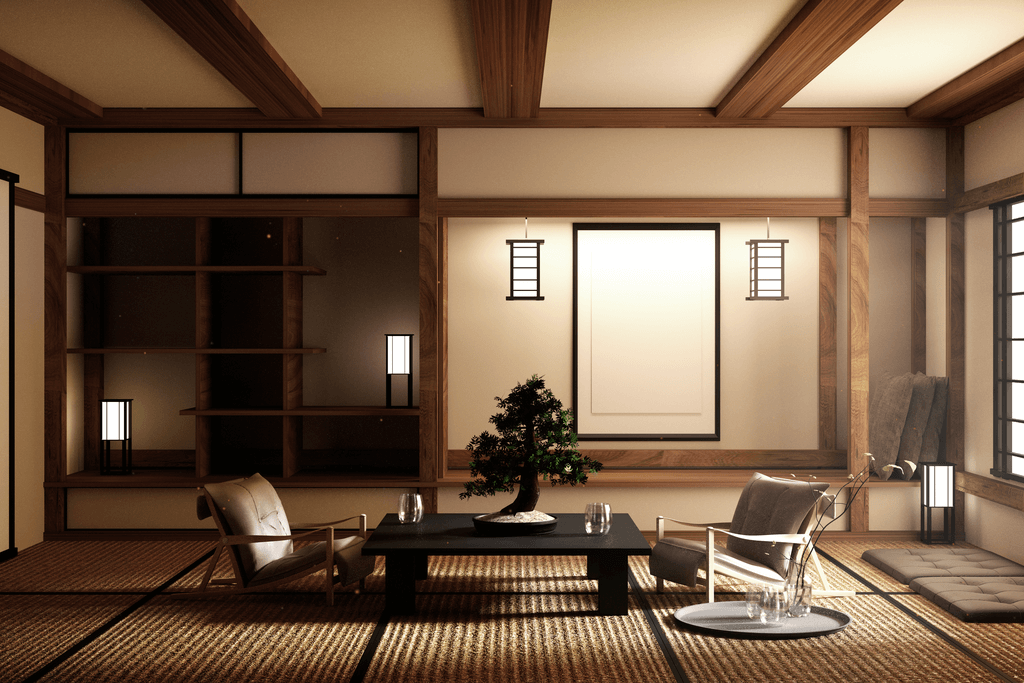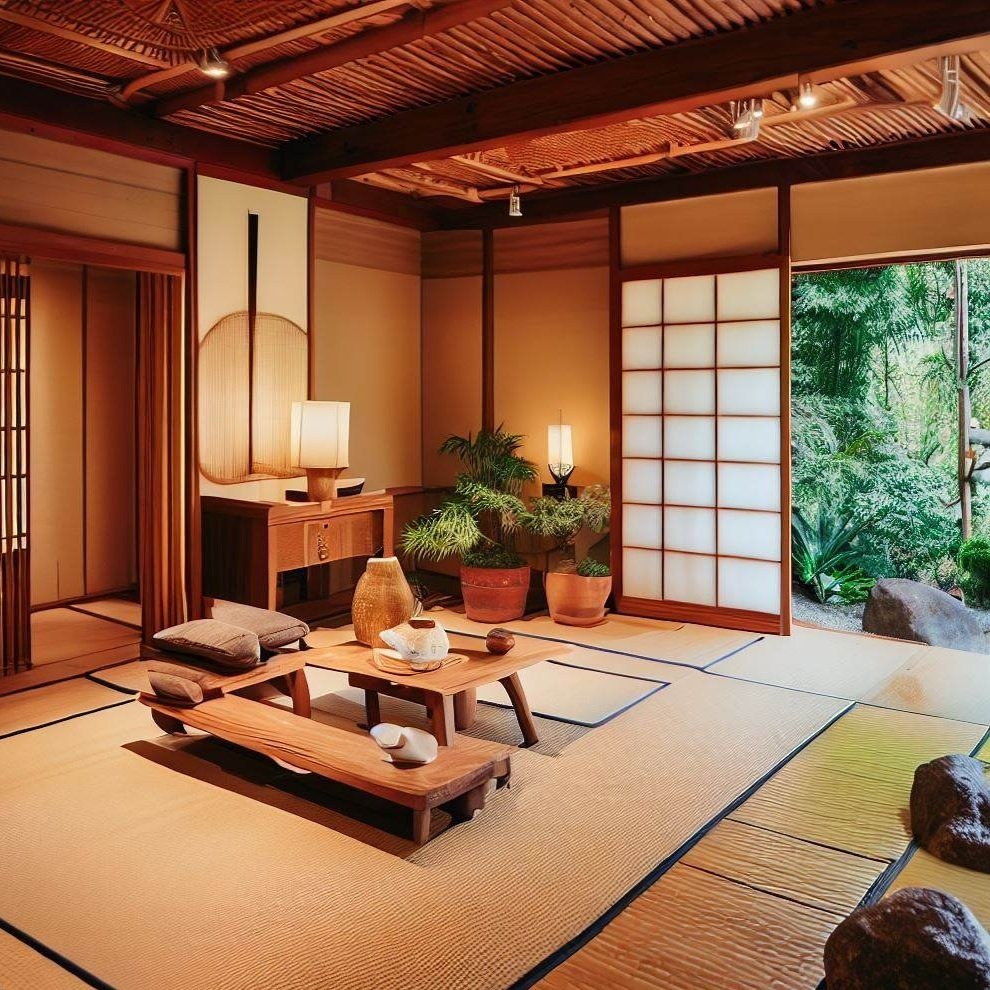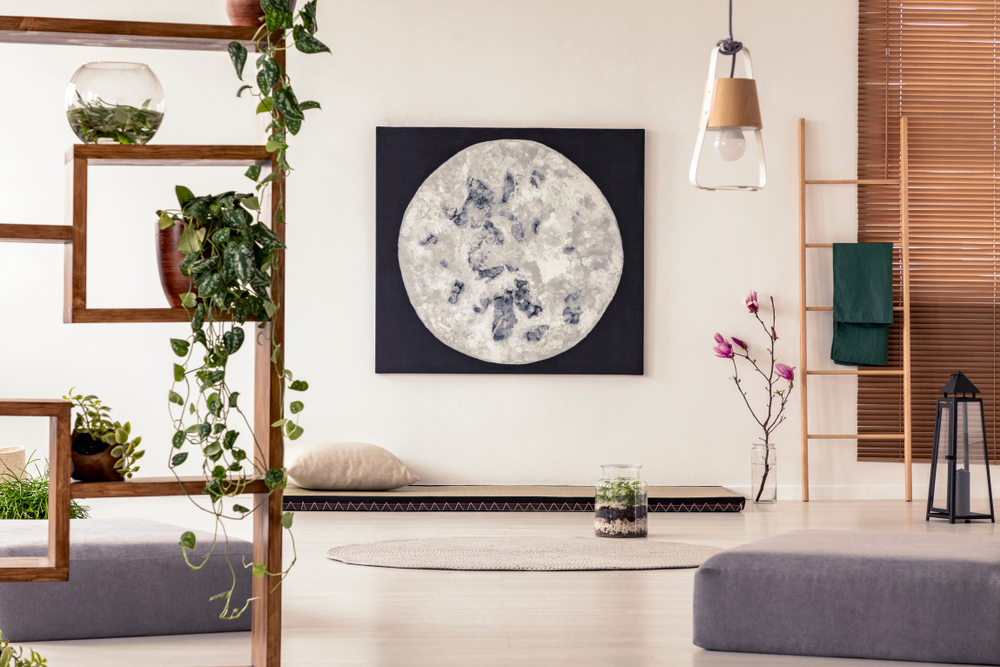Japanese home decor is more than just a design style; it’s a way of life that aims to create a harmonious living environment. As someone who has embraced this aesthetic, I can personally attest to the calming effect it has on daily life. In this article, we’ll dive deep into the principles, elements, and practical tips to create a Japanese-inspired home that resonates with tradition and tranquility.
The Essence of Japanese Home Decor
At its core, Japanese home decor is about simplicity, natural materials, and a connection with nature. The primary aim is to create spaces that evoke peace and harmony. The focus on minimalism also encourages decluttering, allowing for a more mindful way of living.
Key Principles of Japanese Design
- Minimalism: Less is more in Japanese decor.
- Nature: Incorporating natural elements like wood, stone, and plants.
- Balance: Achieving harmony between different decor elements.
- Tradition: Respecting traditional Japanese culture and craftsmanship.
Contrast and Complement
Japanese decor often contrasts with Western styles by avoiding overwhelming patterns or bold colors. Instead, it embraces muted tones and simple designs, which complements a calming atmosphere.

Essential Elements of Japanese Home Decor
Natural Materials

Japanese decor heavily utilizes natural materials which bring warmth and authenticity to spaces:
| Material | Description | Usage Examples |
|---|---|---|
| Wood | Often left in its natural state for a rustic feel. | Furniture, flooring, wall panels |
| Stone | Cool and calming, often used in gardens or as accents. | Garden pathways, accent walls |
| Paper | Used in traditional shoji screens, allowing light diffusion. | Sliding doors, light fixtures |
| Textiles | Natural fibers like cotton and silk are commonly used. | Futon covers, curtains, tablecloths |

Color Palette
The Japanese color palette favors muted and earthy tones:
- Whites: Create a sense of space and cleanliness.
- Greens: Reflect nature, promoting tranquility.
- Beiges and browns: Offer warmth and comfort.
- Soft blues and grays: Provide a calming backdrop.

Accents and Textures
While the primary colors are subdued, accents of deeper tones can be introduced through art, vases, or cushions. Textures from natural materials also add depth to the decor.
Creating a Japanese Living Space

Living Room Inspiration
The living room is typically the heart of any home, and in a Japanese-inspired space, it should feel welcoming yet serene. Here are some tips:

- Furniture: Choose low-profile furniture, such as a low table and floor cushions. This encourages a more intimate and cozy setting.
- Lighting: Opt for soft, warm lighting. Paper lanterns or lantern-style fixtures can add charm.
- Decor: Keep decorations minimal. A few well-placed bonsai trees or ikebana arrangements can enhance the space.
Bedroom Serenity
Your bedroom should be a sanctuary for rest. Here are essential elements to consider:
- Bedding: Use natural materials like cotton or linen for comfort.
- Layout: Position the bed to face the door but not directly aligned with it for better energy flow.
- Storage: Keep clutter away with built-in storage solutions.
Incorporating Shoji Screens
Shoji screens can provide privacy while allowing light to filter through, creating a tranquil atmosphere. They can also act as room dividers for added functionality.
Outdoor Spaces: The Japanese Garden
Creating a Zen Garden
Japanese gardens are designed for contemplation and peace. Here’s how to create your own:
- Paths: Use stepping stones or gravel paths to guide visitors through the garden.
- Plants: Incorporate evergreens, moss, and flowering plants for year-round beauty.
- Water Features: A small pond or water fountain can promote tranquility.
Decorative Elements
Enhance your garden with traditional Japanese elements:
- Lanterns: Stone lanterns can add a classic touch.
- Bridges: A small wooden bridge over a pond or stream can create a picturesque scene.
- Benches: Place benches for quiet contemplation in the garden.
Japanese Decor Techniques and Crafts
Incorporating Handmade Items
Handcrafted items can significantly enrich your home decor. Here are a few traditional crafts you should consider:
| Craft | Description | Where to Use |
|---|---|---|
| Kintsugi | The art of repairing pottery with gold lacquer, emphasizing beauty in imperfection. | Decorative bowls, art pieces |
| Washi | Beautiful paper used for wrapping or decor, showcasing intricate designs. | Artwork, wall decor |
| Ikebana | The art of flower arrangement, focusing on harmony, balance, and simplicity. | Table centerpieces, room accents |
The Role of Calligraphy
Japanese calligraphy (shodo) has a unique aesthetic and can be used to decorate walls, adding character and a traditional touch:
- Quotes: Inspirational sayings can be beautifully rendered in calligraphy.
- Artistic Expressions: Abstract calligraphy can serve as a stunning focal point.
Practical Tips for Achieving Japanese Decor
Decluttering Your Space
One of the first steps in achieving a Japanese-inspired home is decluttering. Here’s how to start:
- Evaluate: Assess all items in your home to determine what sparks joy and what can be donated.
- Organize: Use storage solutions that blend with your decor, such as wicker baskets or wooden boxes.
- Minimal Maintenance: Choose decor items that require minimal care and upkeep, emphasizing quality over quantity.
Integrating Technology
While Japanese decor is rooted in tradition, modern technology can coexist with this aesthetic:
- Smart Lighting: Use smart bulbs to adjust lighting colors and intensity to create the desired ambiance.
- Soundscapes: Integrate speakers with soothing nature sounds to enhance your peaceful environment.
Japanese Home Decor FAQs
1. What are the main characteristics of Japanese home decor?
The main characteristics include minimalism, natural materials, a neutral color palette, simplicity, and a focus on harmony with nature.
2. How can I create a Japanese-inspired garden?
To create a Japanese-inspired garden, focus on natural elements, such as stones, water features, and plants. Incorporate pathways and seating areas for meditation or relaxation.
3. What are some traditional Japanese crafts that can enhance home decor?
Traditional crafts include Kintsugi (repairing pottery), Ikebana (flower arranging), and Washi (decorative paper). These crafts add unique touches to your decor.
4. How does Japanese decor differ from Western styles?
Japanese decor emphasizes simplicity, natural beauty, and zen-like tranquility, while Western styles often incorporate bolder colors, patterns, and a variety of decorative elements.
5. Can I mix Japanese decor with other styles?
Yes, you can mix Japanese decor with other styles by focusing on common elements such as minimalism and natural materials, allowing for a harmonious blend.
Conclusion: Embrace the Serenity of Japanese Home Decor
Incorporating Japanese decor into your home is a beautiful way to create a space that reflects tranquility and mindfulness. Whether you choose to tackle one room at a time or completely reimagine your living environment, the principles of Japanese design will guide you to a harmonious and serene home. As you embark on this journey, remember that the ultimate goal is to create a space that feels inviting, peaceful, and uniquely you.